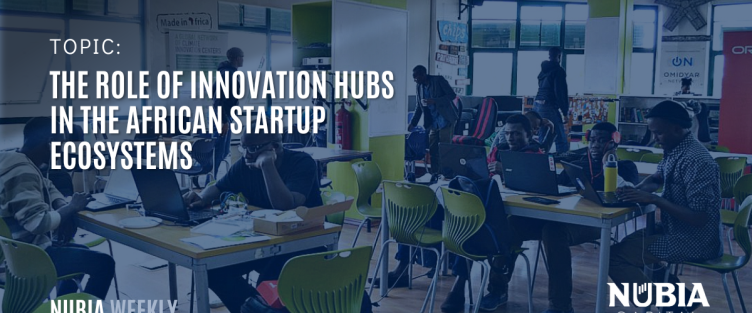Introduction
In an increasingly digital world dominated by virtual/augmented realities and many creations that substitute for real life, a physical space known as a hub is critical and indispensable. On the face of it, they are seen as mere co-working spaces which provide shared work environments where various individuals from different businesses can work independently yet collaboratively but in this innate description lies the power of every hub subtly transforming an ordinary place into a community, a business spirited area, a startup ecosystem.
The power of each hub lies in its function as a community centre. Every location in any area of the world has the potential to be a community but the hubs bring this to life.
The Power of a Hub
Many times, a hub is more than a co-working space. The Wennovation Hub and Co-creation Hub (CCHUB), two of the highly regarded hubs in West Africa, are also accelerators and Incubators. The latter for instance has supported more than 95 ventures that are using technology to solve social problems since it was incorporated in 2010.
To put this into perspective, hubs are usually the first financial and non-financial support for startups in an ideal startup ecosystem. They provide technical support like stable electricity. In-fact hubs are known as one of the strongest pillars of an innovation ecosystem. They provide skills, infrastructure, funding and network. This is not far from the general five pillars that every ecosystem stands on as often mentioned which are Digital skills/education, Digital Government/Regulation, Funding and Finance, Infrastructure and Human Capital. It is also a very common place to find hubs supporting events, facilitating networking sessions and meetups between stakeholders in a startup ecosystem.
The kind of hubs being referred to here are Innovation Hubs – much differentiated from other kinds of hubs, they have two main powers and responsibilities which is to build businesses and create a community in that area. Considering the context, since innovation refers to the process of introducing new ideas, methods, products or technologies that result in significant improvements, advancements or changes, innovation hubs create the atmosphere to spark those new ideas, birth it to life and sustain it until it can crawl, walk and even many times, run.
In essence, Hubs exist to
-Build startups
– Build a supportive ecosystem
– Provide avenue and community for startup growth and increase in innovation ecosystem culture
– Support innovation with research. (Wikipedia says Silicon Valley is one of the biggest research and development centres in the world)

Should you build an innovation hub?
A lot of factors determine the success of a hub. It is not just a house/building where people who lack electricity come to work. It can be that or a support system for the ecosystem, depending on the strength of the factors to be mentioned. Before that, however, it is not wrong to expand our idea of hubs to include districts for instance Silicon Valley. Silicon Valley is a very innovative hub where many technology companies are built and based. The importance of this comparison is to understand how big hubs can be and how intentional it has to be to have great factors supporting them. Silicon Valley, one of the greatest innovation hubs, was not by chance. Here’s a brief history of the Hub.
The region’s foundations were laid in the mid-20th century. Stanford University which is a well prestiged university in the san francisco bay area facilitated cutting-edge research, including electronics and semiconductors. The collaborations between academia and industry attracted engineers and scientists, creating an environment ripe for innovation. Due to this call for research and development, companies like Shockley Semiconductor Laboratory and Fairchild Semiconductor set up shop in the region in the early 1960s and marked critical milestones by the development of Integrated circuits. In 1968, engineers from Fairchild formed Intel – a company that would become the cornerstone of Silicon Valley’s landscape.
Venture capital emerged as a defining feature, providing funding for startups with ambitious ideas. Firms like Kleiner Perkins and Sequoia Capital offered crucial financial support for innovation. The rise of personal computing in the 1970s and 1980s saw the birth of iconic companies such as Apple and Microsoft. These successes showcased Silicon Valley’s entrepreneurial culture and its capacity to drive technological transformation. As the internet gained prominence, Silicon Valley’s role in shaping it was undeniable. Companies like Netscape Communications contributed to the web’s development, while Google revolutionised search. The early 2000s saw both the dot-com boom and its subsequent bust, underscoring the region’s resilience amid economic turbulence.
In summary, Silicon Valley’s growth into a global technology hub was not accidental. It resulted from the convergence of visionary institutions, collaborative research, government support, a risk-taking entrepreneurial ethos, the availability of venture capital, and a series of groundbreaking technological leaps. These elements intertwined to shape an ecosystem primed for innovation and solidified Silicon Valley’s role as a driver of technological progress.
What does this mean?
Building innovation hubs are essential to the ecosystem but it is also the same process of building a startup. It is often referred to as a startup for startups. You have constantly think of better ideas and ways to improve it, and make sure it is standing on the right pillars because ultimately it cannot do the work of developing the ecosystem if it is not supported by the right pillars, team and strategy. You have to recruit the right people and establish the right roles, make sure your employees are learning and enjoying their jobs, make sure the right culture is in place and ultimately have a well-grounded vision carrier.
Conclusion
Innovation hubs are one of the most important aspects of an ecosystem and just like every successful startup, it requires planning, strategy and execution. Not a perfect execution but one that can be improved with feedback from the community it was created for.

The Nubiaway is a strategy to develop and advance Africa by investing in innovation.
Join us via – Info@nubiacapital.org




